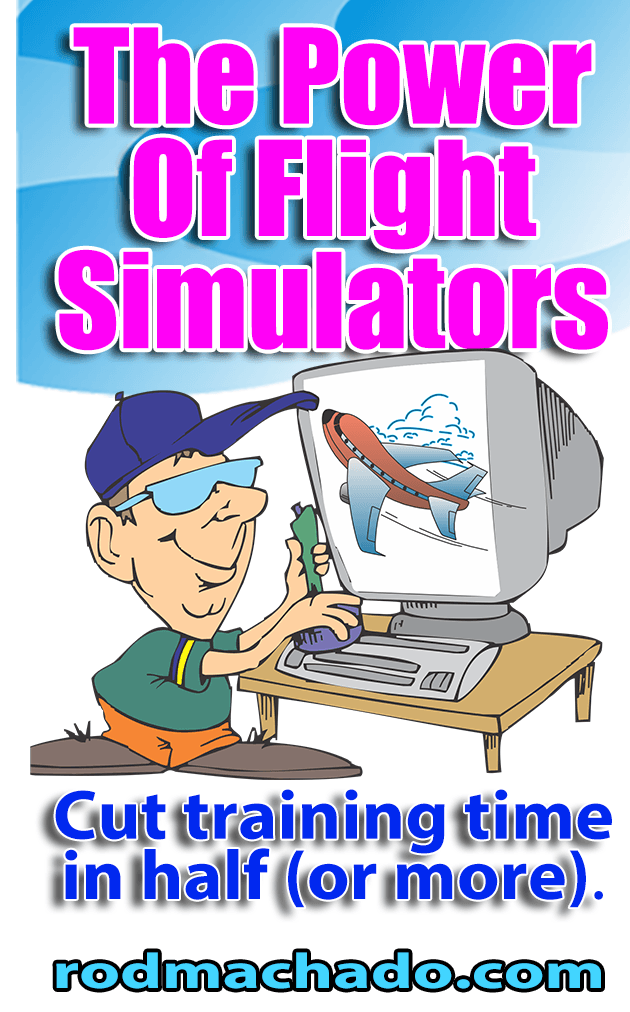Flight Training on a Budget
 Over a period of two semesters, a young college student with two intro flights in his logbook acquired approximately 60 hours of supervised training using a desktop flight simulator. Curious to test his chops at the controls of a real airplane, this student signed up for another intro flight at the end of the second semester. Instead of riding along passively, he asked the accompanying flight instructor to let him do everything—and I mean everything—including talking with ATC, taxiing, flying, et cetera. The instructor reluctantly agreed.
Over a period of two semesters, a young college student with two intro flights in his logbook acquired approximately 60 hours of supervised training using a desktop flight simulator. Curious to test his chops at the controls of a real airplane, this student signed up for another intro flight at the end of the second semester. Instead of riding along passively, he asked the accompanying flight instructor to let him do everything—and I mean everything—including talking with ATC, taxiing, flying, et cetera. The instructor reluctantly agreed.
The result? With less than two hours of actual flight time,the student handled the airplane and ATC with ease. The instructor touched nothing, much to his surprise.
Airport fiction? Tales from Playpilot magazine? Nope. It’s all true.
This student was lucky enough to spend two semesters in Ed Valdez’s flight simulator class at Cypress College in Southern California. Ed is the assistant professor of aviation at Cypress and an über-simulator fan who leverages the devices to reinforce and accelerate his students' acquisition of flight skills.
Ed’s simulator platforms use traditional desktop computers running Microsoft Flight Simulator X (or Elite) and a network known as PilotEdge to provide real-time ATC communication. Several of Ed’s simulators have large TV monitors that enhance the simulation experience (shown here). My favorite one consists of three supersized TV monitors arranged in the shape of a small cubicle (it’s a mini IMAX machine). A traditional computer screen sits slightly below the front main screen and displays the basic analog (not glass) flight instruments.
FREE Flight Training Syllabus
When a student sits down to take the controls, he or she can see the bottom of each wing through the right or left (large) simulated window. This allows the student to directly evaluate the wing’s in-flight angle of attack, a necessary component to learning stick-and-rudder skills. The surrounding terrain also is observable through each large window. This means the instructor can teach the basic concepts of attitude flying, ground reference maneuvers, pilotage, dead reckoning navigation, and pretty much anything else required for private pilot certification.
Additionally, the large monitor in front of the student allows him or her to evaluate height above the runway during landing. This is possible because the runway can still be seen at the bottom left side of the instrument panel and cowling during the flare. After all, this is where students should look if they want to evaluate their height above the runway.
Of course, none of this would be possible without the guidance of a highly skilled instructor such as Ed Valdez, who uses a practical flight syllabus (created by Ralph Butcher at www.skyroamers.com).
One of the secrets to Ed’s success (and there are many) is that he requires his students to have three to four hours of simulator time for every hour of dual instruction they obtain. He also avoids using glass cockpits for primary training, since this has little to do with learning to fly an airplane.
When I visited Ed at Cypress College in mid-October 2014, I met one of his students, Rito, who had 39 hours of Cessna 172 flight time and was ready for his private pilot checkride. Rito had acquired about 30 hours of supervised sim time over a period of several months. According to Rito, Ed’s simulator training program will shave nearly $4,500 off the cost of a private pilot certificate earned at a traditional flight school.
Airport fiction? Nope. Just good simulation software, large monitors, an effective syllabus, good management, and exceptional teaching skill that help students earn their pilot certificates in less time and with less money.
If you or your flight school operate on a budget (and who doesn’t?), then consider using Ed’s flight simulation strategy. Start by acquiring a few large-screen TVs for way under $1,000 each (and they certainly don’t have to be as big as the ones you see here), a desktop computer with a good CPU, and one or two good video cards. Build the “Big Bertha” of flight simulators and obtain a good syllabus to aid in your training. Now you’re on your way to replicating the success that Ed has experienced with his students at Cypress.


